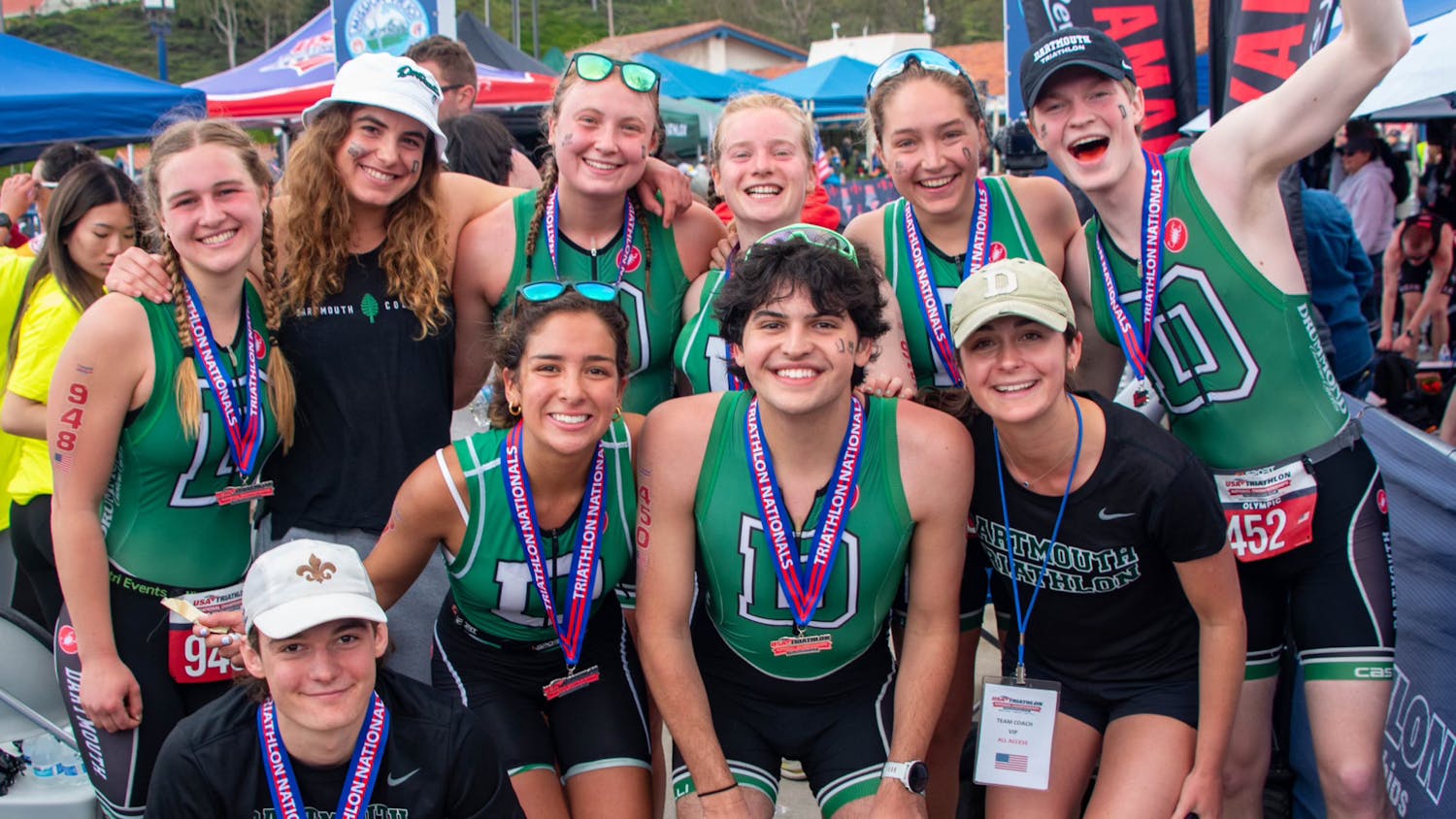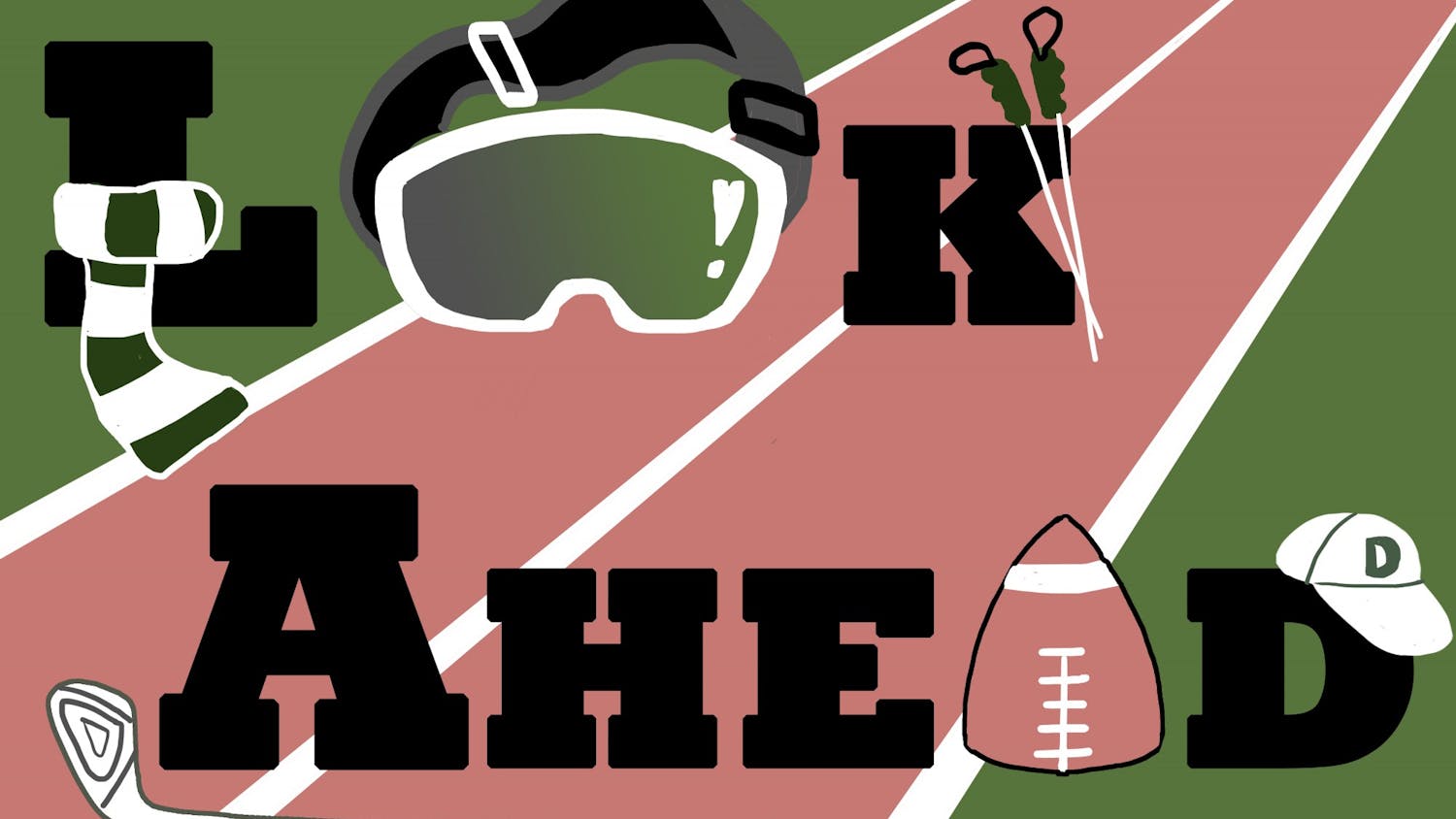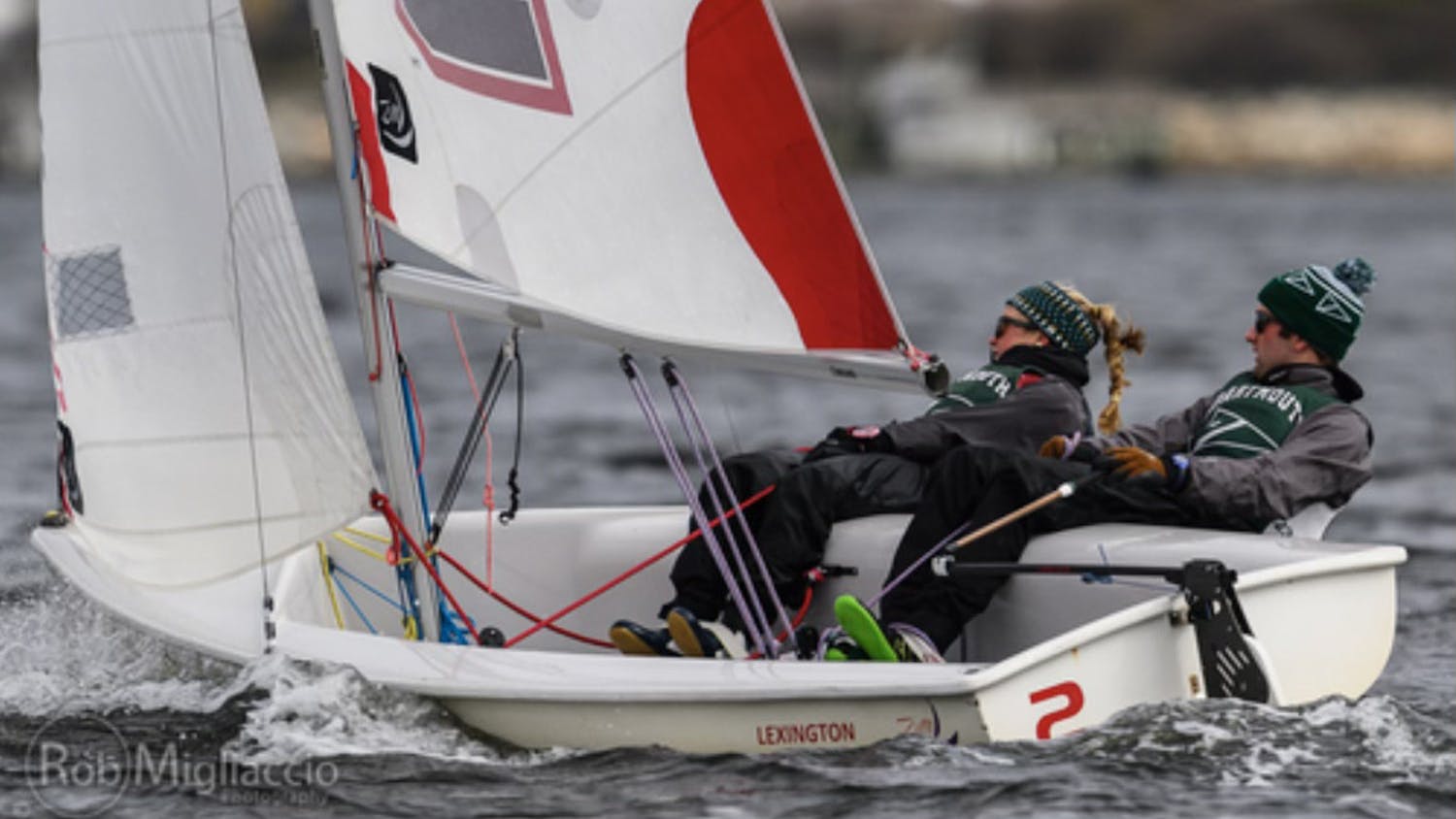Each spring, the men’s football team conducts 12 spring practices to prepare for the coming fall season. Both players and coaches see spring work as a prime opportunity for young and under-used players to show their skills, as well as a chance for experienced veterans and core units to add to their repertoire and improve cohesion.
The football team enjoyed one of its best seasons in recent memory, finishing the fall with an 8-2 overall record and 6-1 against Ivy League competition. The 6-1 conference record left the Big Green second among the Ancient Eight, one game behind Harvard University, which claimed the Ivy League title by winning all seven of its conference games, including a 23-12 victory over Dartmouth in the Big Green’s only conference loss of the season.
“Both of the games we lost were ours to lose,” Pat Hand ’15 said. “Physically, we’re on the same level as Harvard. Our players are just as good, a lot of our players are better. I fully expect us to beat Harvard next year.”
This year, the team has an unusual amount of top players returning next fall and looks to use that to its advantage in pursuit of the Ivy League crown.
“There’s certainly a buzz on campus about this upcoming season,” Rob Lauzen ’15 said. “With the potent [quarterback-wide receiver] combo of [Dalyn Williams ’16] and [Ryan McManus ’15] returning for their final season, an experienced defense and [head coach Buddy Teevens ’79] again at the helm, the team has high expectations.”
The structure of spring training is the same every year, as dictated by the Ivy League. The conference allows all teams 12 practices with pads. Dartmouth adds three sessions without pads before launching into the main body of work. The team uses 11 of the 12 allotted workouts to run through traditional drills, and turns the 12th into the Green-White scrimmage — this year on May 2 — where incoming players and their parents are invited to watch from the stands, Teevens said.
Teevens said that spring training can “teach guys that might not have played a lot in the fall their positions [and] their responsibilities, [and] emphasize fundamentals and basics,” as well as get “different people who have not worked together working a bit more closely.”
He also said that the current practice cycle serves to work younger players into the fold who will fill in the roles of departing student-athletes.
“[We] graduate a number of people — we’ll graduate 29 guys this spring — and [we] have guys step up in their place and work with the people that are surrounding them,” Teevens said.
Defensive end Cody Fulleton ’16 added that spring training can give less prominent players a chance to land on the coaches’ radar.
“When it comes time for camp and stuff, like in the fall, the depth chart’s pretty much set, and I think it’s harder for those young guys to get those reps,” he said. “In spring, we’ve lost all the seniors, so there’s reps for everybody to have. So it’s huge for the young guys from a developmental standpoint.”
The team is graduating relatively few of its star players this year, with 12 of 16 members of the team who received All-Ivy selections last season returning this coming fall. Fulleton believes the fact that so many high-quality athletes can stay is an exciting prospect for the Big Green going forward.
“It’s huge. It’s providing tons of leadership for the guys,” he said. “[We’ve] got a lot of seasoned people on the team and a lot of knowledge and things that the younger guys can feed off of.”
While the concept of a no-pad practice might seem strange in football, Teevens said that it isn’t a huge change from his typical in-season practices, where athletes are not allowed to make full tackles in order to avoid long-term injury.
He said that the same techniques are widespread in the NFL as a result of pressure from the players’ union, but that his type of system is very rare in the college game.
The concern for the physical well-being of the players is important for their performance on the field, but Teevens said he also considers what players will be doing once their collegiate football careers wind down.
“And the other thing is you wear yourself down,” he said. “I get guys who are going to be doctors and lawyers and engineers and investment bankers and so forth, and I want to keep them healthy.”
The scrimmage at the end of spring training will also not have full tackles, but Teevens still believes it can be an opportunity for breakout performances.
“You’d like to think that you’re developing guys through practice — culmination, it’s a game environment, let’s see what [they] can do under pressure,” Teevens said. “What you like to see is just steady improvement in each of the 12 opportunities.”
The Green-White scrimmage will be held on May 2 at 10 a.m.



